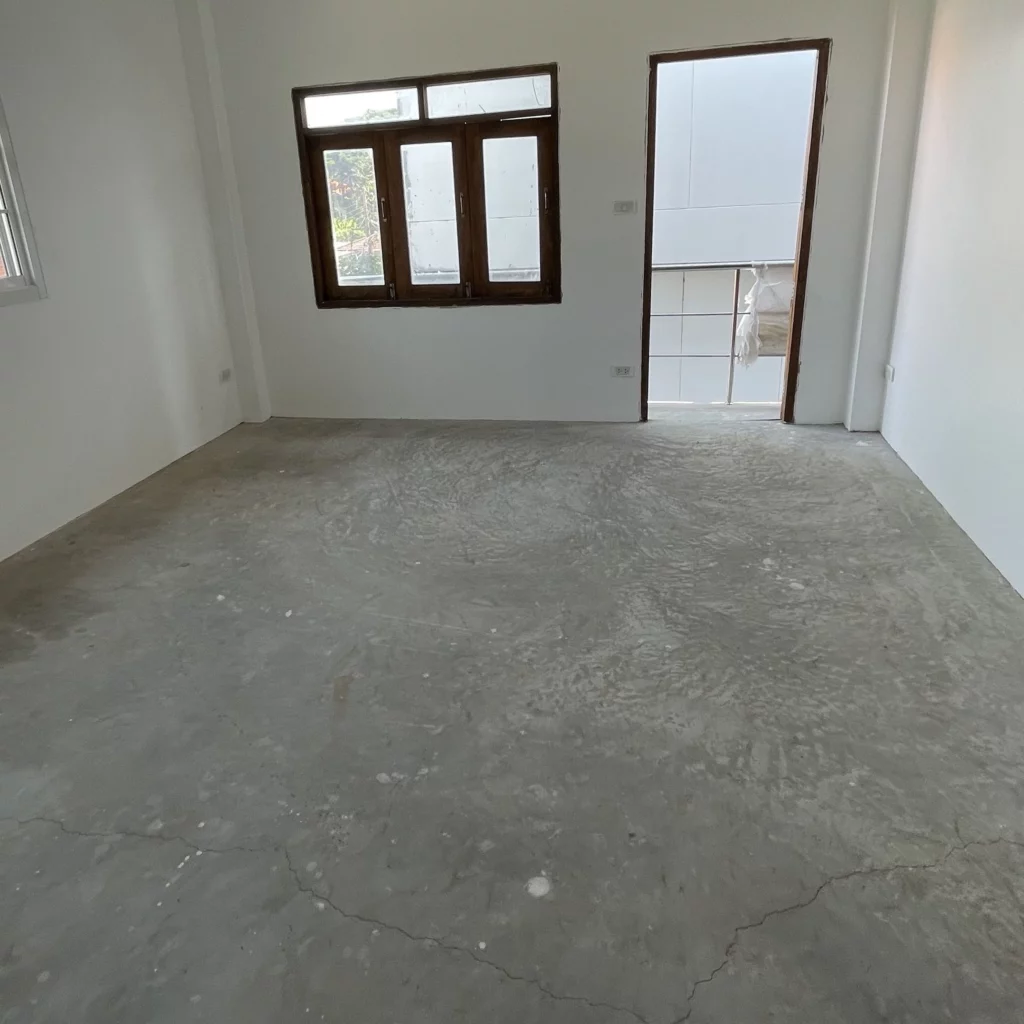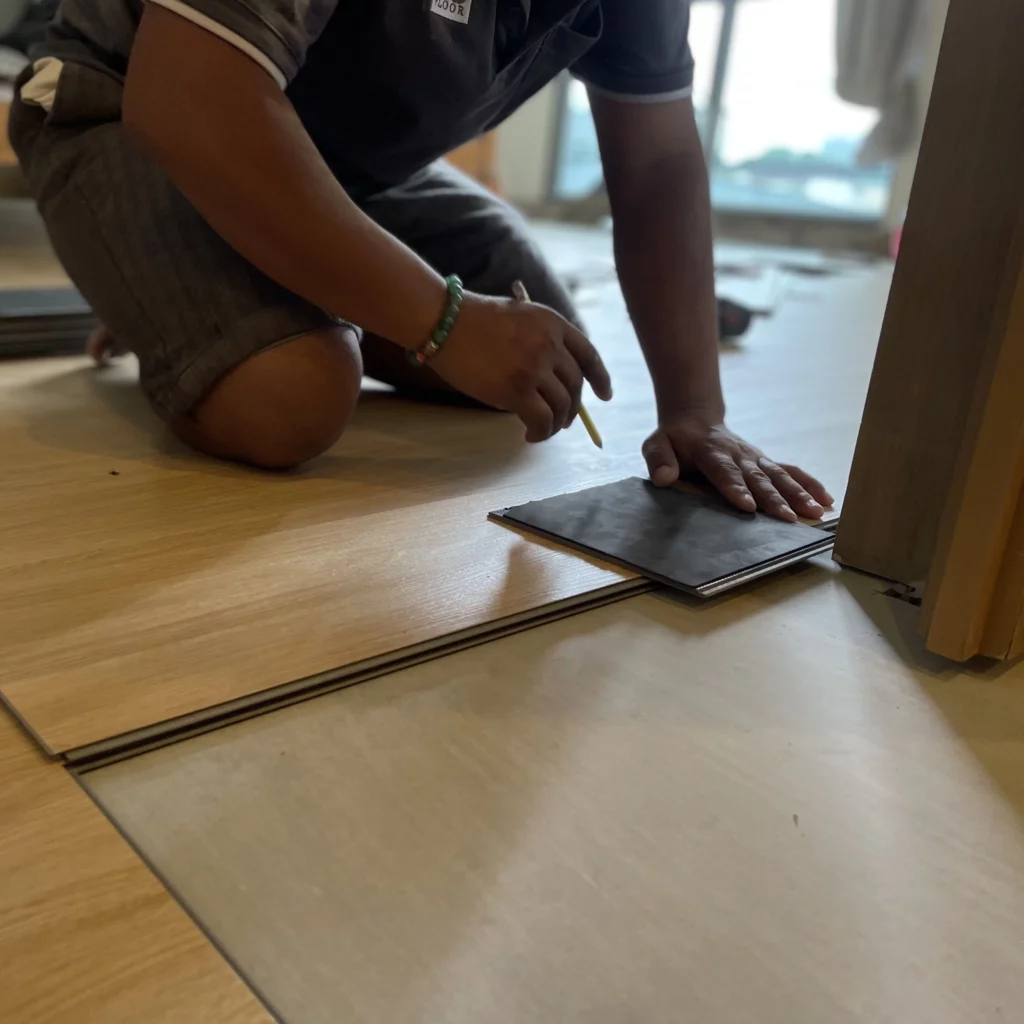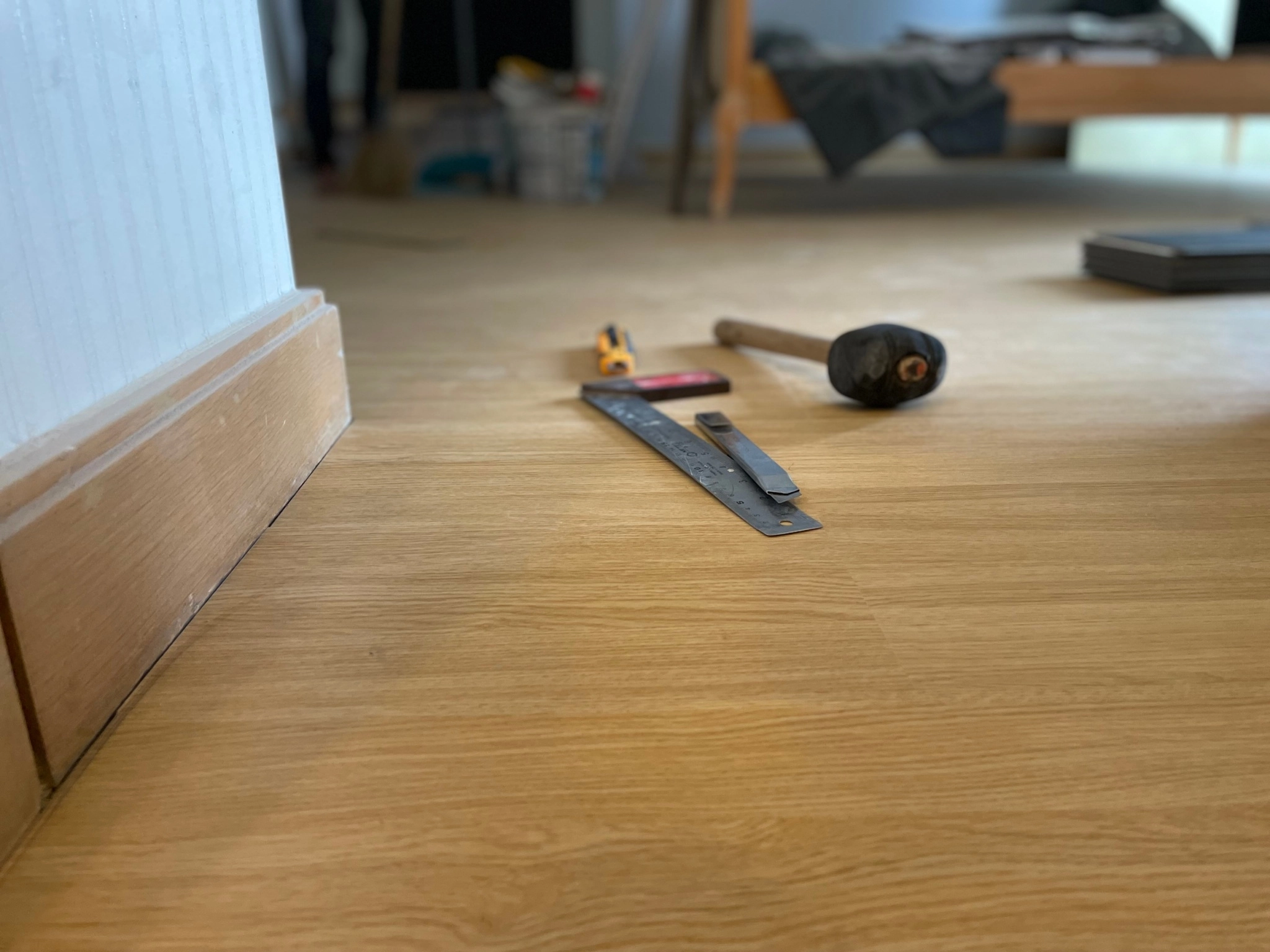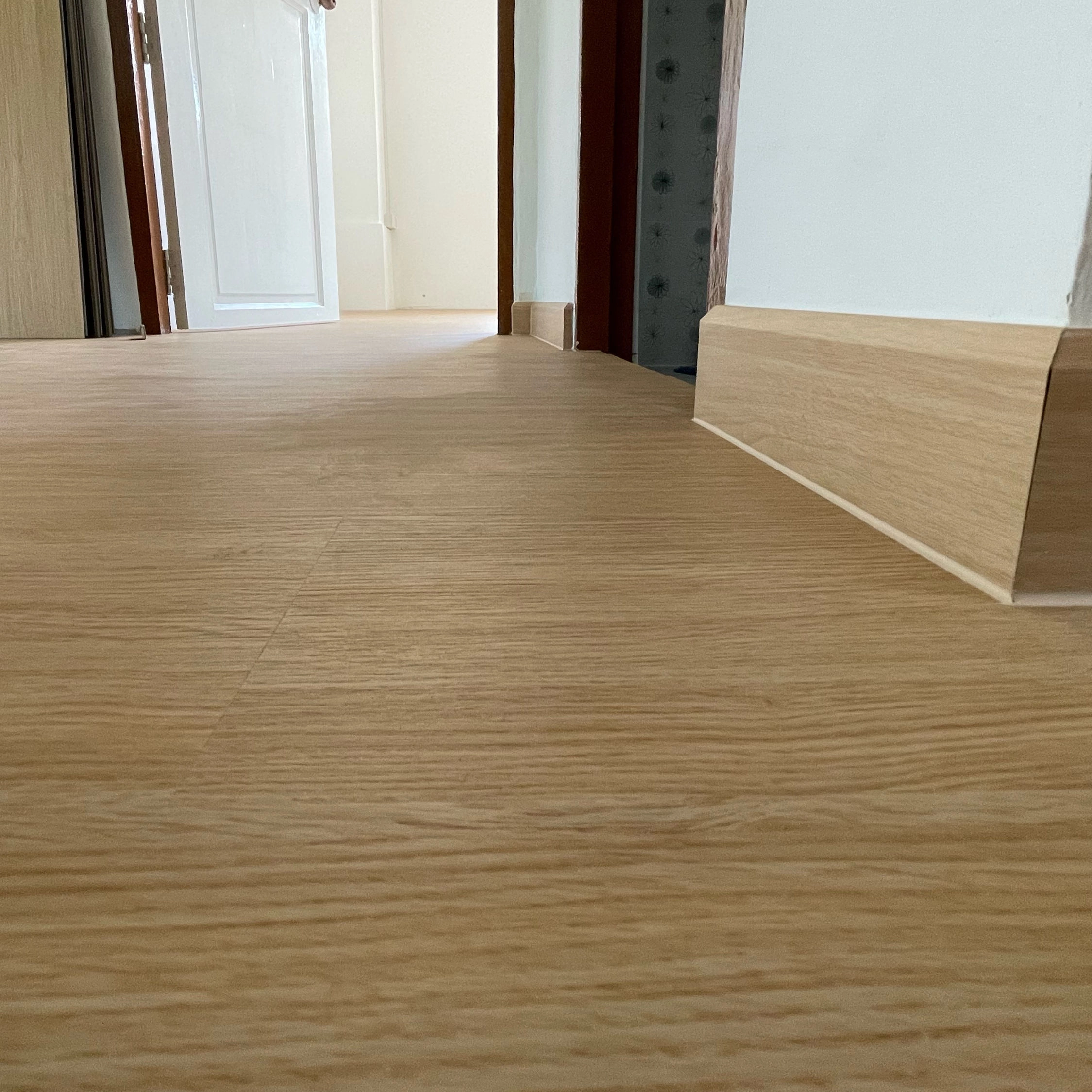การเตรียมหน้างานที่ถูกต้อง
ในหลาย ๆ ครั้งหลังจากที่ช่างปูพื้นเสร็จเรียบร้อยแล้ว บางครั้งไม่สามารถส่งมอบงานได้เนื่องจากพื้นเดินแล้วรู้สึกไม่แน่น โก่งตัวขึ้นมา หรือหลังจากใช้งานไปสักพักแล้วพื้นเกิดอาการบวม โก่งงอ คลิ๊กล็อกแตกหักเสียหาย หากต้องแก้ไขบางครั้งจำเป็นต้องรื้อใหม่แทบทั้งหมด การเตรียมหน้างานที่ถูกต้องถือเป็นขั้นตอนเริ่มต้นที่สำคัญเพื่อให้พื้นอยู่กับเราไปอย่างยาวนาน
หลาย ๆ ครั้งที่ต้องเจอปัญหาหลังจากติดตั้งเสร็จแล้ว พื้นเดินไม่สบายเหมือนในรูป วันนี้ทาง BS FLOOR มีเคล็ดลับดี ๆ มานำเสนอก่อนทำการติดตั้งค่ะ


- ถ้าพื้นใหม่ปรับระดับเรียบ มีขรุขระเล็กน้อย ไม่เป็นหลุมบ่อ งานแบบนี้เราให้ผ่านค่ะ
- ถ้ามีท่อโผล่มาปูได้ไหมคะ ไม่ต้องห่วงค่ะ เราปูหลบได้ไม่มีปัญหาค่ะ
- พื้นต้องได้ระนาบ จะมีslopeเล็กน้อยได้ไม่มีปัญหาแต่ต้องได้ระนาบ แล้วจะรู้ได้ยังงัยเอ่ย? ปกติช่างจะใช้เกรียงปาดปูนยาวทาบ หรือไม่ก็ระดับน้ำยาวมาทาบดู แนะนำให้ช่างทาบแล้วเราดูค่ะ อันนี้ skill ช่างเลยค่ะ
- ประตูติดตั้งแล้ว จุดนี้ต้องระมัดระวัง ในระยะห่างใต้ประตูและพื้นควรมีระยะห่างเผื่อไว้ 1 ซมค่ะ
- พื้นเดิมเป็นกระเบื้อง เป็นไม้ เป็นลามิเนต สามารถปูพื้นทับกระเบื้องเดิมได้ไหมคะ? สามารถปูได้ค่ะ ถ้าพื้นเดิมไม่มีการหลุดร่อน หรือชำรุด
- แล้วถ้าชำรุดทำอย่างไรคะ ซ่อมค่ะ ถ้าชำรุดเป็นจุด แต่ถ้าชำรุดเยอะแนะนำให้รื้อออกเลยค่ะ จะได้ไม่เจอปัญหาในอนาคต
- รื้อเสร็จ ปูได้เลยไหมคะ? ยังค่ะ ต้องตรวจก่อนว่าพื้นเดิมสภาพใช้ได้ไหมคะ หลายๆงานพื้นไม่ได้ระนาบ แต่ใช้โฟมรองหนาๆ สำหรับพื้นเก่า หรือ ถ้ากระเทาะพื้นเก่า พื้นมีโอกาสชำรุด ต้องซ่อมก่อนค่ะ แล้วจึงค่อยปู
- ข้อนี้สำคัญ พื้นที่จะทำการปูต้องแน่ใจว่าไม่มีความชื้น เพราะจะทำให้พื้นที่ปูเกิดการโก่งตัวได้หลังจากใช้งานค่ะ




